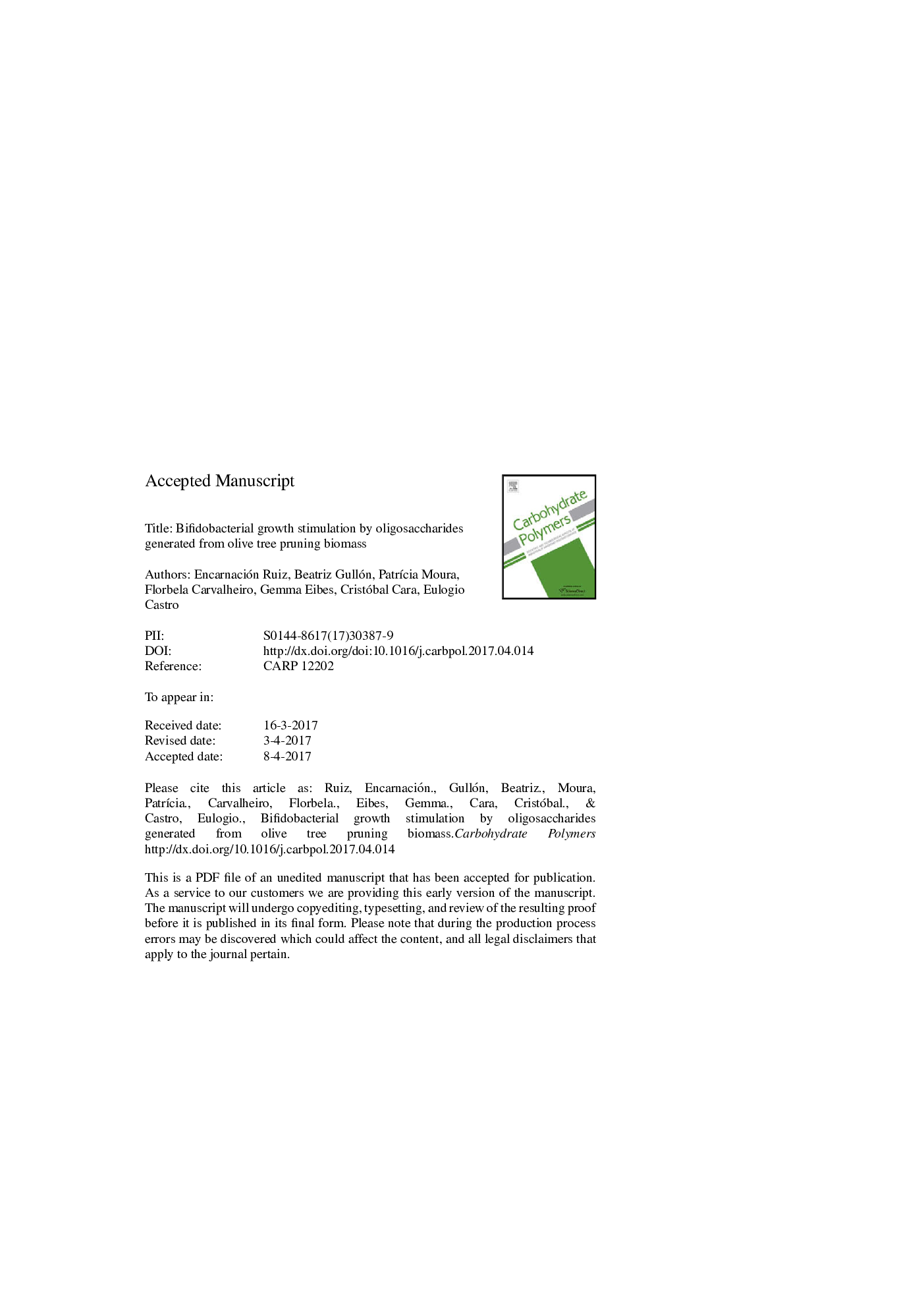| Article ID | Journal | Published Year | Pages | File Type |
|---|---|---|---|---|
| 5157185 | Carbohydrate Polymers | 2017 | 27 Pages |
Abstract
This work aims to evaluate the prebiotic potential of oligosaccharides (OS) obtained from autohydrolysis of olive tree pruning biomass (OTPB). Two selected fractions (F1 and F2) were characterized and used in in vitro fermentations by two Bifidobacterium spp. (B. adolescentis and B. longum) and one fecal inoculum. The fraction F1 presented a lower average degree of polymerization (DP) mainly with OS ranging from 3 to 6 DP, whereas the fraction F2 corresponded to a pool of unsubstituted and acetylated oligomers with DP between 4 and 19. In the fermentation by Bifidobacterium, F1 supported a higher biomass formation, OS consumption and organic acids production than F2. With the fecal inoculum, the accumulation of organic acids, as the sum of acetate, propionate and butyrate, was similar for F1 and F2 (107 and 101Â mM, respectively). The bifidobacteria counts also increased during the incubation time for both OS fractions.
Related Topics
Physical Sciences and Engineering
Chemistry
Organic Chemistry
Authors
Encarnación Ruiz, Beatriz Gullón, PatrÃcia Moura, Florbela Carvalheiro, Gemma Eibes, Cristóbal Cara, Eulogio Castro,
